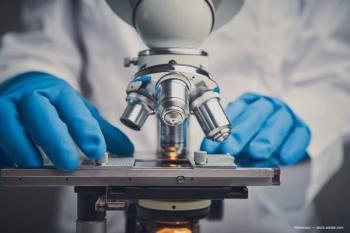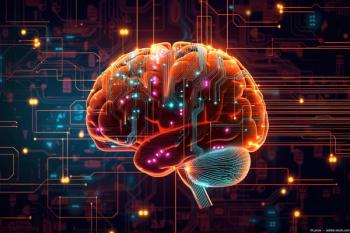
AI-enabled tool offers glimpse of glaucoma-related functional loss
Using artificial intelligence, researchers have created a new tool for assessing visual function of patients with glaucoma that is designed to overcome the limitations of existing algorithms.
This article was reviewed by Siamak Yousefi, PhD
An artificial intelligence-enabled radar holds promise for providing better visual functional assessment of patients with
The glaucoma radar is being developed for use in clinical practice and glaucoma research as a personalized staging and monitoring tool for glaucoma assessment. It provides three layers of knowledge about the disease-severity of global visual functional loss, extent of visual functional loss in hemifields, and local patterns of visual functional loss. It can identify rapid and slow progressing eyes and retain data from thousands of past
Related: The future: Artificial intelligence gains acceptance in ophthalmology
According to Dr. Yousefi, assistant professor, Department of Ophthalmology and Department of Genetics, Genomics, and Informatics, University of Tennessee, Memphis, TN, visual function assessment of patients with glaucoma is typically done using standard automated perimetry.
“While this technique is well established, most of the methods for longitudinal visual field data analysis have a number of limitations,” he said. “The algorithms rely on traditional paradigms such as linear progression, but
Dr. Yousefi explained that the artificial intelligence radar is an advanced computational tool that can provide more detailed analyses.
“It can generate an informative, objective outcome with multiple layers of
Related: How AI benefits patients and physicians
Development
The radar was developed using more than 13,000 visual fields from more than 8,000 subjects. Principal component analysis was applied to linearly reduce the number of dimensions and extract the global characteristics of the visual fields, and manifold learning was applied to identify the local patterns of visual field loss..
The map or “cloud” of datapoints from the 13,000+ visual fields was then annotated by first identifying very dense regions of the visual field and then applying unsupervised clustering which identified 32 nonoverlapping clusters representing visual fields at different levels of severity.
The 32 clusters on the radar “dashboard” had different mean deviation of the visual fields corresponding to pattern of global visual functional severity with normal eyes located on the right side of the dashboard and eyes with severe visual functional loss at the left and bottom left corner.
Related:
Superior and inferior hemifield severities were also computed and mapped, and it was noted that the artificial intelligence pipeline put eyes with similar hemifield characteristics into different clusters even though their global severity may be statistically similar. The researchers also developed a method to identify and decompose visual fields of eyes in each cluster into 17 different patterns of visual field loss and showed that the tool could identify local patterns of visual functional loss.
Validation of the radar was achieved using visual fields from two independent benchmark datasets. The testing demonstrated that cases of confirmed progression consistently followed the direction of visual functional worsening on the dashboard whereas eyes with stable function showed no worsening. The tool performed with 94% specificity and 77% sensitivity.
Related:
Individual cases involving patients with serial visual fields acquired over a period of approximately 10 years also illustrated the performance of the tool for showing that the glaucomatous-related functional loss was progressing or remaining stable.
“Using the radar to monitor patients with glaucoma can help guide treatment decisions,” Dr. Yousefi said. “Based on their experience with the radar, clinicians might forecast the next step in a patient’s glaucoma progression and taking into account factors such as its impact on visual function and quality of life, thus adjust the treatment plan.”
Going forward, Dr. Yousefi and colleagues will be validating the model using more clinical data and looking into how to integrate the tool into the clinic.
Siamak Yousefi, PhD
E: [email protected]
This article was adapted from Dr. Yousefi's presentation at the 2019 meeting of the American Academy of Ophthalmology. The project has funding support from the National Eye Institute. Dr. Yousefi has no other relevant financial interests to disclose.
Newsletter
Don’t miss out—get Ophthalmology Times updates on the latest clinical advancements and expert interviews, straight to your inbox.



















































.png)


